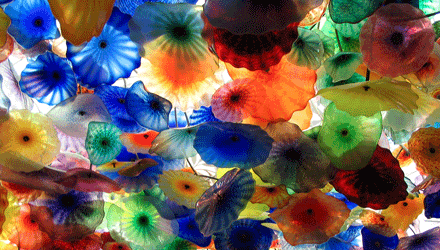Glassmaking is an ancient art that has captivated human beings for centuries. The delicate beauty and versatility of glass have made it a popular medium for various purposes, from functional objects to stunning works of art. In this blog post, we will explore the fascinating world of glassmaking, from its origins to the modern techniques used today.
I. A Brief History of Glass:
- Origins: The history of glass can be traced back to ancient civilizations such as Mesopotamia and Egypt, where basic glass objects were first created around 3500 BCE.
- Roman Influence: The Romans played a significant role in advancing glassmaking techniques, introducing glassblowing around the 1st century BCE. This innovation revolutionized the industry and allowed for more intricate designs.
- Middle Ages and Renaissance: Glassmaking continued to evolve during the Middle Ages and Renaissance, with the creation of stained glass windows and intricate glassware.
II. The Glassmaking Process: 
- Raw Materials: Glass is primarily made from silica sand, soda ash, and limestone. These ingredients are carefully measured and mixed to create a molten glass mixture.
- Furnace and Melting: The glass mixture is then heated in a furnace at high temperatures, usually around 1500°C, until it becomes a molten liquid.
- Shaping Techniques: a. Glassblowing: Glassblowing is the most common technique used to shape molten glass. A skilled glassblower uses a blowpipe to gather molten glass and then shapes it by blowing air into the pipe while manipulating the glass with various tools. b. Kiln Forming: Kiln forming involves shaping glass by heating it in a kiln until it becomes malleable and can be manipulated into molds or fused with other pieces of glass. c. Lampworking: Lampworking, also known as flameworking, is a technique that involves using an open flame to melt and shape glass rods or tubes.
- Cooling and Annealing: Once the desired shape is achieved, the glass object is carefully cooled to room temperature in a controlled manner to relieve internal stresses and prevent breakage. This process is called annealing.
III. Types of Glass:
- Soda-Lime Glass: The most common type of glass, soda-lime glass, is used for everyday objects such as bottles, windows, and tableware. It is durable and relatively inexpensive to produce.
- Borosilicate Glass: Borosilicate glass is known for its high heat resistance and is commonly used in laboratory equipment and kitchenware, such as Pyrex.
- Artistic Glass: Artistic glass encompasses a wide range of techniques and styles, including stained glass, glass sculptures, and intricate glass jewelry.
IV. Modern Innovations in Glassmaking:
- Float Glass Process: The float glass process, developed in the mid-20th century, revolutionized the production of flat glass sheets. This technique involves floating molten glass on a bed of molten tin, resulting in perfectly flat and smooth glass surfaces.
- Glass Fiber: Glass fiber, also known as fiberglass, is a versatile material used in insulation, reinforcement, and composite applications. It is made by extruding molten glass into thin fibers.
- Glassblowing Revival: In recent years, there has been a resurgence of interest in traditional glassblowing techniques. Many artists and craftsmen are exploring new possibilities and pushing the boundaries of glass as an artistic medium.
Conclusion: Glassmaking is a captivating art form that combines skill, creativity, and scientific knowledge. From its ancient origins to the modern innovations, the world of glassmaking continues to evolve and inspire. Whether it’s a delicate glass sculpture or a functional glass object, each piece tells a story of craftsmanship and beauty. So, the next time you gaze through a window or admire a stained glass masterpiece, take a moment to appreciate the artistry and ingenuity behind it all.



















Add Comment